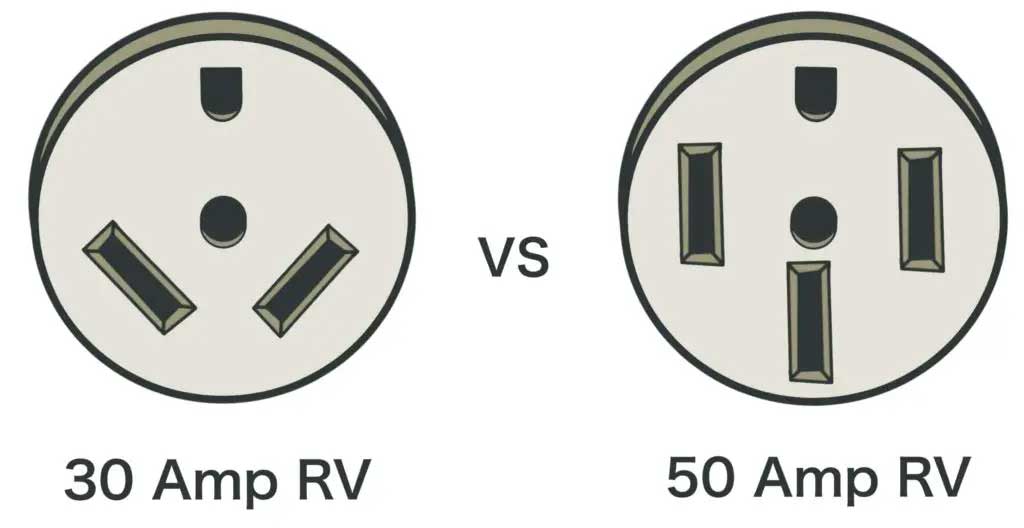RV Electrical Amps Explained
- June 12, 2023
- RV Accessories
- Posted by admin
- Leave your thoughts

When it comes to RV electrical service, there is a major difference between 30 amp and 50 amp options. A 30 amp service typically comes with a 3-prong plug on the power cord and is used for RVs that don’t require a lot of electricity. This type of service has a maximum wattage of 3,600 watts, or 120-volts multiplied by 30-amps. On the other hand, a 50 amp service has a 4-prong plug and is most often used on larger RVs that require more electricity. This type of service has a maximum wattage of 12,000 watts, or 120-volts multiplied by 50-amps.
When a 50 amp RV is plugged into a power pedestal, there are two 50-amp, 120-volt hot wires, a neutral wire, and a ground wire. This is referred to as a 120/240 split phase service, and it enables the RV to balance the electrical load between the two hot wires. This is especially important for RVs equipped with two or more roof air conditioners, residential appliances, entertainment centers, and washers and dryers.
It is important to note that although a 50 amp RV service is more powerful than a 30 amp service, plugging a 30 amp RV into a 50 amp receptacle using an adapter will not increase the amperage in the RV. On the other hand, if a 50 amp RV is plugged into a 30 amp receptacle using an adapter, the wattage is limited to 3,600 watts.
Finally, having a 50 amp surge protector with voltage protection is important for any RV equipped with a 50 amp service. It tests both lines (L1 & L2) of the 50-amp service and protects all appliances regardless of which 50-amp leg they are on.
According to an article by RV Repair Club, “The 30-amp service is most commonly used on RVs that are built on a lighter chassis and have fewer electrical components. The 50-amp service is typically used on larger RVs that draw more power and have more electrical components.” Thus, it is important to consider the size and electrical demands of the RV when choosing between a 30 amp or 50 amp service.
Packed with lots of information for RV Camping.

Powered by New World RV Development Team.
Privacy Policy - Website Terms & Conditions
